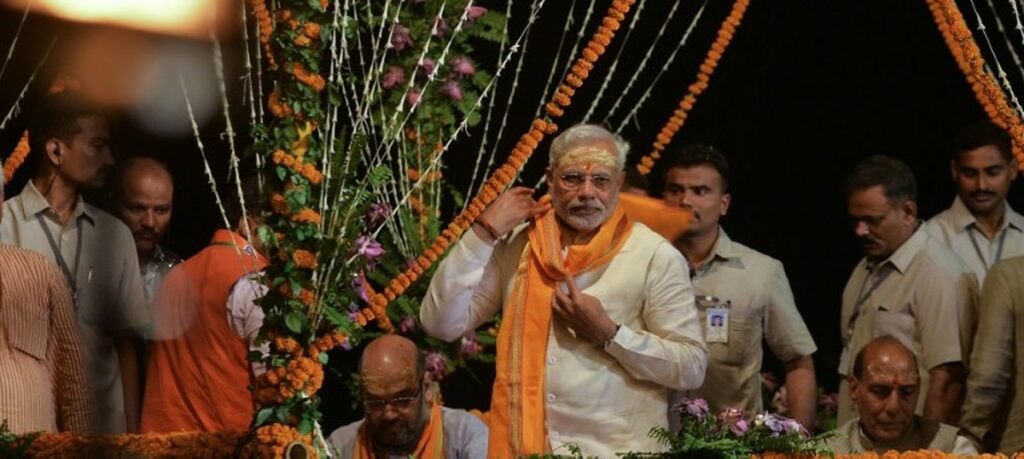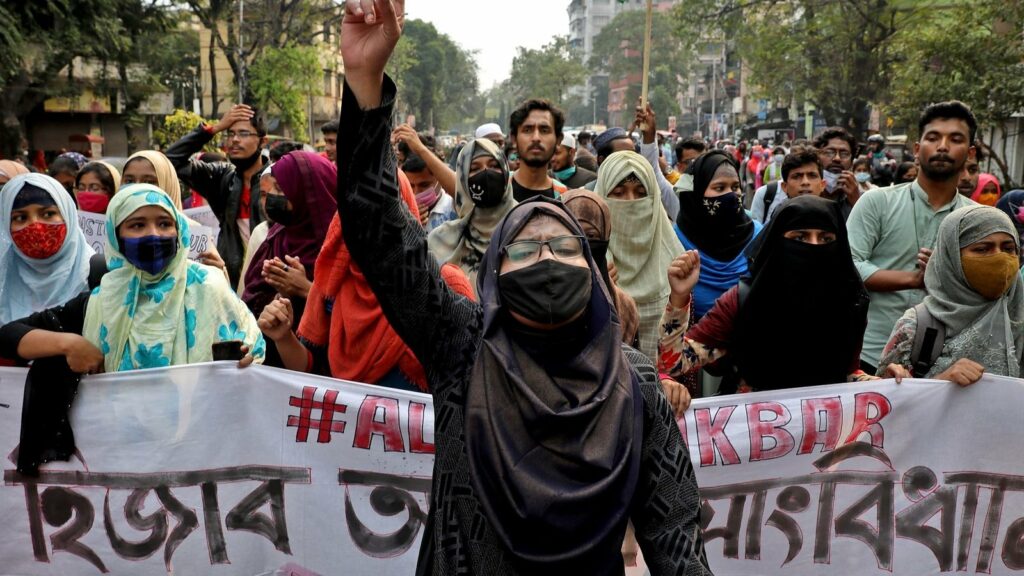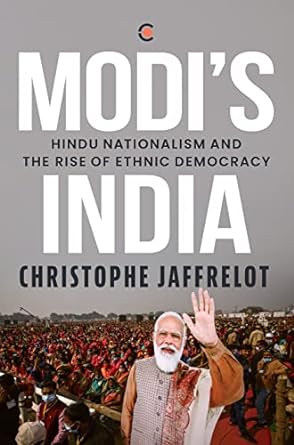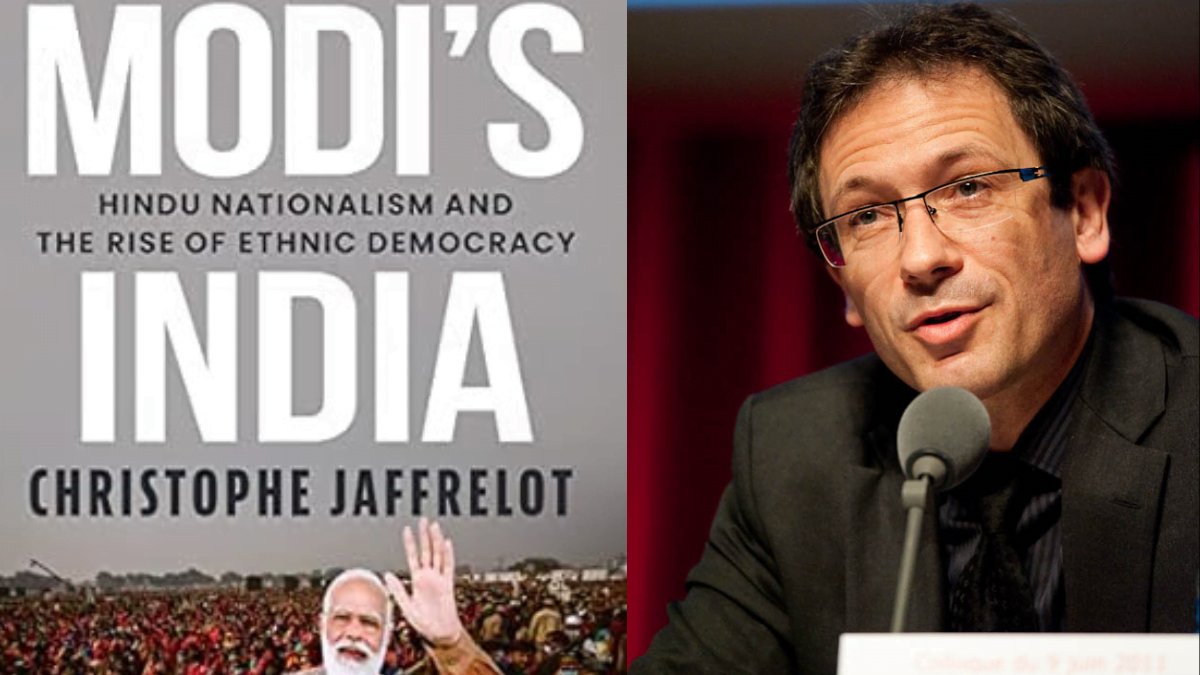Christophe Jaffrelot’s book, Modi’s India: Hindu Nationalism and the Rise of Ethnic Democracy, provides a comprehensive examination of the political landscape In India over the past three decades. Jaffrelot critically analyses the historical trajectory of Hindu nationalism, culminating in the triumph of Hindutva and the emergence of Narendra Modi as the Prime Minister.
The book delves into Modi’s strategies for acquiring and consolidating power, examining his rhetorical style, personalised communication, and sharp criticisms of opponents.
Shift towards ethnic democracy
The author contends that under Modi’s leadership, India witnessed a shift towards a novel democratic paradigm, resembling Sammy Smooha’s concept of ethnic democracy or majoritarianism. In this emerging political system, the majority community is equated with the nation, relegating minorities to a subordinate status.

While Israel enshrines this majoritarianism through constitutional amendments establishing Jewish supremacy, Modi’s India, particularly in his first term, exhibited a de facto ethnic democracy with minimal legal amendments. The ascendancy of Hindu nationalism over secularism manifested in assaults on liberals, including NGOs, intellectuals, and institutions like JNU, accompanied by the Saffronisation of education.
Simultaneously, minorities faced both physical and symbolic violence from Hindu vigilante groups, often under the Sangh Parivar umbrella. These groups, seemingly endorsed by the state, operated as a parallel authority, launching various campaigns such as combating love jihad and land jihad. Their efforts extended to attempts to reconvert individuals who had embraced Islam or Christianity in previous generations, and assaults on those accused of cow slaughter, a contentious issue leading to a series of lynchings. The vigilantes weren’t confined to the streets but also operated online, employing psychological violence through trolls, seemingly sanctioned by the nation’s leaders.

In the initial section of the book, Jaffrelot convincingly argues that upper castes, including dominant castes, have regained prominence and now wield influence within the Modi regime. The author highlights instances of anti-minority aggression by the government and the Bharatiya Janata Party (BJP).
Jaffrelot meticulously details discriminatory policies and actions that escalated post-2019 election victory, emphasising the shift from indirect involvement to active state participation in such measures. The media’s alignment with the regime is also scrutinised in this section.
The second section of the book initiates a discourse on the concept of ethnic democracy, defined as a scenario where “certain citizens are denied equal rights solely based on their religious identity,” (p.156). Within the context of India, this manifestation of ethnic democracy becomes particularly evident in Modi’s second term.
The BJP government, both at the central and state levels, actively promoted Hindu culture through measures such as enhanced legal protection for cows, crackdowns on dissidents, and a reduction in the operational space for NGOs.
Rise of vigilante groups during Modi’s reign
During this period, the plight of minorities, especially Christians and Muslims, witnessed a further decline. These communities faced stigmatisation, with vigilante groups affiliated with the Sangh Parivar, notably the Bajrang Dal, launching campaigns against them. While Hindu vigilante groups existed prior to Modi’s regime, their activities, under Modi’s leadership, became more systematic, instilling fear among minorities. Notably, these vigilante groups receive protection and support from Sangh Parivar leaders who have either infiltrated state institutions or secured elected positions.
In essence, the Sangh Parivar endeavours to establish an ethnic democracy by influencing public consciousness to enforce cultural norms and practices, superseding the importance of legal frameworks.
Beyond physical threats, the internet has become a battleground for massive propaganda campaigns that vilify and propagate hatred against minorities. This online propaganda, which runs parallel to the activities of vigilante groups, is orchestrated systematically by the Sangh Parivar. In essence, the Sangh Parivar endeavours to establish an ethnic democracy by influencing public consciousness to enforce cultural norms and practices, superseding the importance of legal frameworks.

Drawing on original interviews conducted across India, Jaffrelot explores how Modi’s government has steered the country toward a new form of democracy, characterised as an ethnic democracy. This political shift equates the majoritarian community with the nation, relegating Muslims and Christians to second-class citizens who face harassment from vigilante groups. The book sheds light on the attacks against secularists, intellectuals, universities, and NGOs, illustrating the repercussions of promoting Hindu nationalism.
Jaffrelot extends his analysis to the broader political system, revealing authoritarian features that have emerged due to the centralisation of power. The government’s desire to govern not only in New Delhi but also in the states has led to a weakening of federalism and an undermining of institutions that traditionally served as checks and balances, including India’s Supreme Court.
The third part of the book focuses on a form of authoritarianism rooted in majoritarian nationalism, leading to communal polarisation in Indian society. Jaffrelot highlights the manipulation of independent institutions, the use of media for political propaganda, and campaigns that further marginalise and terrorise Muslims and other groups or individuals challenging the authoritarian Hindu Rashtra.

The strength of Jaffrelot’s work lies in his meticulous scholarship, detailed documentation, and keen observations of changes in the social, political, cultural, and economic realms. It goes beyond a mere description of events or a standard analysis of democracy in decline, offering a poignant perspective on the erosion of social morality, institutional values, and republican principles.
However, a notable gap in the book is the insufficient coverage of resistance against the neutralisation of the opposition. While Jaffrelot explores the centralisation of power and attacks on proponents of secularism, free speech, social justice, and liberal values in universities, the book overlooks the forms and extent of resistance against these trends. Several academics and free thinkers in India have vehemently opposed PM Modi’s policies, and students at various universities have actively resisted the institutionalisation of Hindutva.
For instance, protests against Modi’s ambitious project, the Citizenship Amendment Act of 2019, coupled with the proposed all-India National Register of Citizens, have not only been political and intellectual but also a form of defiance against an unconstitutional law by ordinary citizens, particularly led by women and students. These instances of resistance are crucial in understanding the multifaceted response to the perceived authoritarianism described by Jaffrelot.
The book Is a valuable resource for scholars, policymakers, and anyone seeking an in-depth understanding of the socio-political transformations in the world’s largest democracy. Despite some limitations, such as the minimal coverage of resistance movements, Jaffrelot’s work stands as a comprehensive and thought-provoking exploration of India’s contemporary political dynamics.
About the author(s)
Aamir Raza is a dedicated researcher based in New Delhi, India. He holds a Master's degree in Political Science from Jamia Millia Islamia University, New Delhi. He has been previously associated with Lokniti-CSDS and the Institute of Perception Studies as a Researcher. His areas of research interest include Electoral politics, representation, minority studies, ethnic politics and democratisation.






